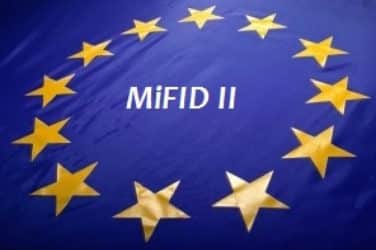
Mark Pumfrey, head of Liquidnet Europe, Middle East and Africa, said its acquisition of market analytics provider OTAS Technologies allows the institutional trading network to provide a “category killer” for best execution under new European regulations.
MiFID II, the regulations which come into force in January 2018 for financial markets in the European Union, requires firms to have policies and procedures in place so they can demonstrate that they taken sufficient steps to achieve the best results for their clients when executing orders.
In May Liquidnet announced the purchase of OTAS Technologies, which was founded in 2011 to analyse market data and highlight actionable information for equities trading to fund managers in an easily digestible visual format. Pumfrey said Liquidnet became interested in OTAS three to four years ago due to comments from members.

Mark Pumfrey, Liquidnet
“The acquisition of OTAS adds a new dimension to Liquidnet sourcing natural liquidity,” added Pumfrey. “The buy side has chronic information overload and OTAS alerts can be tied to indications of liquidity in our pool based on past data and the member’s own filters.”
OTAS software analyses changes from the normal pattern in data such as insider transactions, short interest, options and credit default spreads and automatically highlights the most relevant signals for stocks in their portfolio for review. The firm also uses a natural language reporting technology which automatically generates alerts in plain English, rather than in charts or graphics, based on parameters set by the clients – which can include calendar events, price performance and short interest. Clients can also choose the timeframe of analysis, the frequency of the report and a time of receipt.
Pumfrey said: “The OTAS data solution is a category killer for best execution under MiFID II as the whole process is auditable. We can time stamp the order, the OTAS alert and subsequent changes to the order.”
OTAS can be integrated with Liquidnet’s Virtual High Touch trading platform, although Liquidnet will also support OTAS on other front-end systems. Virtual High Touch includes data analytics, liquidity search tools and trading algorithms, MiFID II solutions and real-time market intelligence.
This month Liquidnet said its algo ranking model is available in Europe, after being launched in the US. Last month Liquidnet announced the appointment of Takis Christias as head of trading strategies EMEA from Citi to continue the build-out of the algo business.
“The introduction of Liquidnet’s algo ranking model in Europe is part of our strategy of providing tools based on statistical information that gives the buyside more control over their orders,” said Pumfrey. “Members can weight factors in an algorithm – such as price or liquidity – and receive an audit trail to analyse the impact.”
In order the help the buyside find more liquidity, last year Liquidnet rolled out targeted invitations in the US and Asia-Pacific after launching in Europe in 2015.
Targeted invitations allows qualifying members to send actionable invitations to Liquidnet members who have recently traded in the same security. Unlike indications of interest, targeted invitations are firm and committed orders and are available only to members who fit the eligibility criteria. Pumfrey said: “Targeted invitations have grown in the past 18 months as there is no market leakage.”
In May Liquidnet said the introduction of targeted invitations for watchlists helped the firm achieve a record quarter in fixed income in the first three months of this year. Fixed income traded $1.2bn (€1.05bn) in volume with daily liquidity of approximately of $7bn from more than 600 active traders.
Liquidnet said: “Targeted invitations for watchlists is a natural extension of the highly successful targeted invitations launch from last year, which has yielded 74% more matches and 40% more trades since launch. The new watchlist enables traders to track, monitor and potentially source liquidity for up to 100 additional bonds of interest.”
MiFID II extends regulations from equities into other asset classes, such as fixed income, even though there is less history of electronic trading.
“For fixed income best execution, we are creating something similar to a market tape for liquidity in our own pool,” said Pumfrey. “Systems like Trace in the US will emerge in Europe and on-venue evaluation will emerge very quickly.”
In the US, Trace is used for the mandatory regulatory reporting of over-the-counter secondary market transactions in eligible fixed income securities.

Rebecca Healey, Liquidnet
Rebecca Healey, head of EMEA market structure and strategy at Liquidnet, said this week on a panel hosted by BT on MiFID II, that she had spoken with 55 heads of dealing across the globe for research on best execution. In the forthcoming report, Re-engineering Best Execution, 39% of respondents said they are now reviewing their requirements as a consequence of the dearth of viable fixed income, currency and commodities transaction cost analysis, opening the door to a new range of analytical products and services for the fixed income dealing desk.
Healey added: “The multi-asset nature of MiFID II is resulting in buyside participants looking further afield from transaction cost analysis and rethinking their requirements to meet best execution obligations.”
MFIID II will also lead to a host of new venues and a new market structure. Pumfrey said: “After MiFID II the buyside will face complexity and fragmentation, and we can demonstrate that we have provided the best liquidity at the best price so we are perfectly positioned.”




